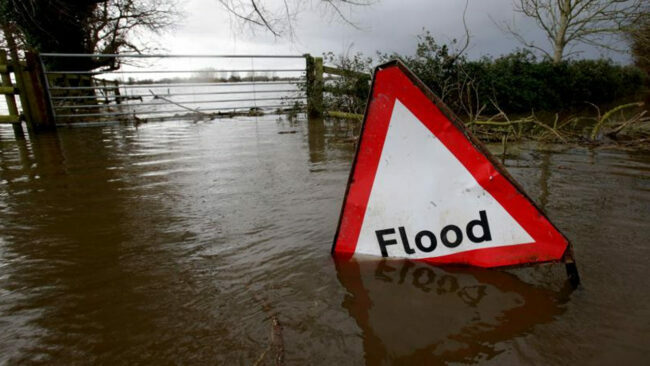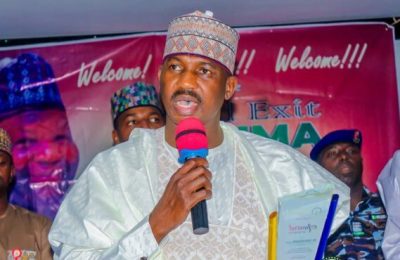Going by the 2024 Seasonal Climate Predictions, Lagos and Ogun are to experience high amounts of rainfall and strong winds this year, the Lagos State Commissioner for the Environment and Water Resources, Dr Tokunbo Wahab, has said.
According to the commissioner, Lagos State is expected to experience normal to above-normal rainfall, adding that the same is reflective of neighbouring Ogun State.
As a result, he advised residents in communities in coastal and low-lying wetland areas of the state, to move upland to avert needless loss of lives and property.

These communities include Owode, Iwaya, Makoko, Badia, Ijora, Isaalu, Pota, Shibiri, among others.
Briefing newsmen on Tuesday in Lagos on the “Seasonal Climate Prediction and Socio-Economic Implications on Lagos State,” citing the Nigerian Meteorological Agency (NiMET)’s 2024 report, he said the expected rainfall and temperature patterns spanned the entire country in 2024, adding that normal rainfall amounts are being anticipated in the first half of the rainy season while normal to above normal rainfall amounts are expected in the second half of the rainy season.
According to him, the rainy season was expected to start in the first week of April and cease in the first week of December, while the average annual rainfall amount predicted was 1936.2mm and greater than the long-term average of 1721.48mm.
Specifically, he disclosed that Ikeja was expected to have an onset date of 4th April with a cessation date of 4th December and a high annual amount of 1900mm.

“Badagry is expected to have a rainfall onset date of 1st April, cessation date of 5th December, and annual amount of 1978mm.
“Ikorodu is projected to have a rainfall onset date of 4th April and, cessation date of 4th December with an annual amount of 1903mm.
“Lagos Island on its part is expected to have a rainfall onset date of 3rd April, cessation date of 4th December with annual amount of 1936mm.
“Epe is expected to have a rainfall onset date of 2nd April, cessation date of 5th December while annual amount
of rainfall will be 1952mm,” the commissioner said.
While Lagos State is expected to experience normal to above normal rainfall, the commissioner said it was also expected that the high amounts of rainfall sometimes might lead to flash flooding in parts of the state.
Due to expected strong winds during the onset and cessation of each rainfall season, he explained that lives and properties might be prone to risks, adding that commercial activities disruption, flight delays, and resultant revenue loss could also arise.
Reeling out the state efforts to be battle ready, the commissioner disclosed that the state has deployed and continue to maintain its own network of weather stations as well as river gauge stations to monitor the weather and river levels as well as increase the preparedness for weather and flood related issues.
To ensure a flood-free and hygienic environment in the state, the commissioner explained that the ministry has embarked on an all-year-round drainage maintenance program for effective and efficient flood control, in addition to an efficient and sustainable solid waste management system.
Besides, he said the state is determined to maintain the long-established synergy and partnership with the Ogun-Oshun River Basin Authority (OORBDA), which ensured control and monitoring of the steady and systemic release of water from Oyan Dam to prevent flooding of the downstream reaches of the Ogun River.
“This mutual relationship has been highly beneficial in the past and will be sustained.
“Therefore, the low-lying areas of Agiliti, Agboyi, Itowolo and Ajegunle communities in Lagos State are being closely monitored with respect to the likelihood of Ogun River flooding as well as all other river basins in the state,” he said.
He warned against indiscriminate discharge of solid waste as well as erection of illegal structures along the drainage alignment/setback.
“The ministry collaborates with NiMet in the annual Seasonal Climate Prediction release which has been valuable as a vital weather and early warning tool for farmers, planners, decision makers and operators of the various sectors and businesses that are likely to be impacted by the annual rainfall.
“We must also state that there are plans to downscale the National Seasonal Climate Prediction for stakeholders like farmers and emergency workers in the state,” he said.
He assured that the state will continue to reap the benefits of careful and rigorous planning, as flood control measures are being stepped up to contain any imminent heavy rainfall.
The commissioner disclosed that the Lagos State Signage and Advertisement Agency (LASAA) has been put on high alert to make sure advertising and communication agencies comply with regulations on the safety of billboards and telecommunication masts to prevent the incidences of telecommunication mast collapse caused by the high wind speed, expected during the onset and cessation of every rainfall season.
Pleading with the residents, he said:” As is the case in several parts of the world, it is occasionally normal to have flash floods when it rains, which will percolate or drain off rapidly. It is only when flooding remains on the roads for hours that we can report that such places are flooded.
Another contributory factor to flooding, he said was the rise in Lagoon level.
*Anytime there is high tidal movement, it may “lock up” the discharge points of drainage channels and until it recedes, there will be no discharge.
“Such occurrences also cause backflows, resorting to flooding. But as soon as the Lagoon recedes, all the generated storm water will immediately be discharged and our roads will be free.”
In response to the above phenomena, Wahab said the state government has strengthened the Flood Early Warning Systems (FEWS) to deliver reliable, timely and effective flood information at appropriate response times.







